Final Destination, Safety Culture and the Post-Industrial Accident
An almost paranoid over-reading of how (in)visibility, secular spirituality and terroristic aesthetics in the Final Destination series play with our fears about health and safety culture in the post-industrial workplace.
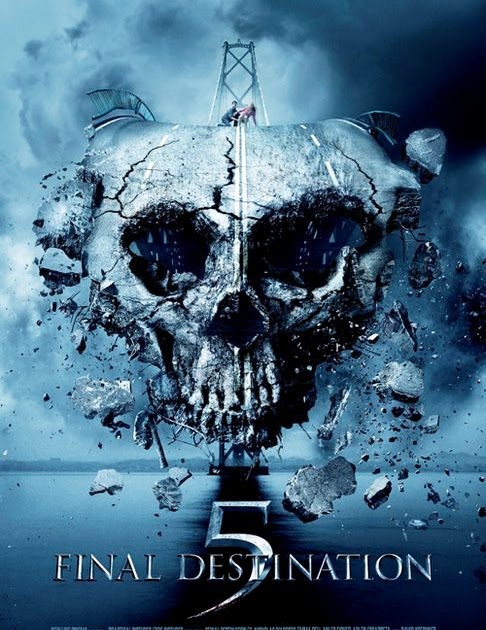
Final Destination is a horror franchise that follows a very simple and repetitive structure: each instalment revolves around a protagonist that has a premonition of a terrible vehicular or industrial catastrophe that will kill numerous people. The hero manages to get several people to escape from the horrific disaster before it happens. Their safety does not last long. A personified Death stages a series of bizarre and complex Rube Goldberg-like accidents by manipulating the environment in order to reclaim the lives he has been cheated of. Generally, the main character tries to prevent any more fatalities, finding out that Death is killing their friends in a specific order and learns, through additional premonitions and omens, that certain objects will be involved in their fatalities. As a result of this premise, Death does not appear as a traditional villain; instead objects, locations and even other people are all potential murderers. This interconnection of paranoid protagonist, materialistic accidents, plans to prevent deaths and an invisible, pervasive power can be read as a response to the rise of “health and safety culture” throughout the 1990s, where the responsibility and structures for protecting workers and ensuring compensation changed dramatically, and all the lower-level workers were responsible for looking out for potential risks.

Deregulation and the Horrors of Health and Safety: “Corporate Has us operating at less than fifty percent until this thing blows over.”
Arguably, the regulatory apparatus of the state was created to protect workers against the physical or mental consequences of production by setting minimally safe conditions of work, establishing a legal framework for compensation and enacting other legislative actions. However, from the 1980s onward, much of this protective structure has been dismantled in favour of expanding a competitive market economy. Consequently, institutional flexibility, unregulated markets and the encouragement of risk taking have replaced the regime of collective or corporate responsibility. Simultaneously, what has been termed the “safety culture” has emerged, becoming popularised in the 1990s. According to Susan Silbey, this is no coincidence. She argues that an increase in neoliberal economics has a vested interest in producing such a worldview: “Rather than forgoing particularly dangerous technologies or doing less in order to reduce vulnerabilities to natural, industrial, or terrorist catastrophes, talk about safety culture reinforces investments in complex, hard to control systems as necessary and manageable, as well as highly profitable (for a few)” (Silbey, 343). This correlation between economic pursuit at the expense of safety and restraint finds its parallel in the Final Destination franchise.
Increasingly in the later films, and especially Final Destination 3, the deaths take place in commercial or industrial settings. Some reviewers have felt this scene-hopping to be exploitative in how it prioritises spectacle over story: “there’s death and destruction in a few more varied places this time round, including the high school gym, a fast-food drive-thru and a particularly wince-inducing incident at a tanning salon […] so, you start to get the feeling that the writers are running out of ideas” (Ali). This structural focus of scenes on settings and set-pieces rather than characters perhaps reflects the increasingly distant relation between monetarily-based safety culture and personal security. In fact, the film series uses ironic advertisements and brand names as clues to the impending fatalities, causing these commercial locations and images to invoke anxiety and a critical sense of humour. For instance, the advertisement for the Phoenix Tanning salon in Final Destination 3 declares proudly that it is a place “Where Every BODY Tans”, which is a poor choice of words given that two young women recently burned to death there. The capitalisation of “BODY” emphasises the punning and two-fold nature of the ominous slogan: for the protagonist it evokes the threatening meaning of “corpse” while for the consumer it suggests the living body as a symbol of sexual attractiveness. Here, situational irony and punning jokes about death makes the audience feel uneasy and aware of both customers and workers fall victim to the products and environments of a deregulated, unsafe consumer culture.
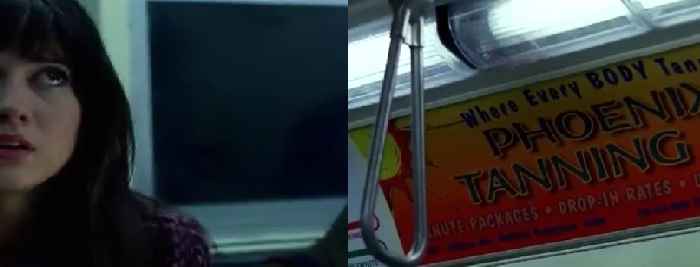
This paranoid and informed central character has an outlook and responsibility that is paralleled by an employee or worker in a safety culture. Due to the decline in unionised labour and an increased focus on risk taking, lower level employees who are “repositories of critical information and counterhegemonic views […] are often unable to persuade higher-ups in the organization of either the credibility of their knowledge or relevance of their perspectives” (Silbey, 361). Likewise, throughout the Final Destination series, the protagonists are often disbelieved or harassed by figures of authority that refuse to believe in any supernatural explanation of the horrific events. And, while everybody misinterprets the deaths as accidents, the protagonist knows the wider truth: Death has a list, and people’s demises are ordered into his specific system or design. The hero has specialist knowledge that, like a lower level employee, gets dismissed by the authorities.
In the first film, the FBI and police actively pursue Alex Browning (Devon Sawa) and incarcerate him while he is checking the tires on a potential victim’s car, believing his close involvement with the outlandish deaths to be suspicious. Perhaps even more illustrative of this intermingling of corporate authority and hegemonic power is evident in Final Destination 5, where the company’s regional boss, Dennis Lapman (David Koechner), actively reports on the suspicious behaviour of his workers to the FBI. This mixture of institutional disbelief and antagonism means that the central character personally takes it upon themselves to save their friends, transgressing laws and recommendations made by the police. Overall, the protagonists of the Final Destination series mirror workers in a safety culture as they have important information, but are denounced by their social superiors, and have to do additional work and risk in order to enact this knowledge and save lives.

Preventing Death by Supernatural Causes: “I could try it a hundred times and never recreate exactly what happened here. This is some freaky shit.”
As previously stated, there is hidden information about Death’s design that must be actively searched for or deciphered in photographs, newspaper articles or dreams by a select group of individuals. Others simply ignore, laugh at or fail to see the portents in front of them. But the audience, aware of the previous events and a co-witness of the premonition, does not doubt these potential signs. In fact, they become almost as paranoid. “Death is only evident via his plan. This is incredibly powerful, because it lets our imagination do all the work” (Blake and Bailey, 85). In other words, by teasing the audience with limited information and multiple possibilities, we suddenly see ominous events accumulate everywhere but are, of course, powerless to either intervene or be sure of our predictions until it is too late. Once again, Death’s obscure design is acting like a culture of safety. As Silby states: “Information that might shape more cautious and responsive interpretations is often missing, actively buried, or discredited […] by the distributed work processes and organizational norms of secrecy that impede the communication or understanding that is vital for our safety” (Silbey, 357).
In the post-Industrial workplace, a fear of bad publicity about negligence, commercial rivalries and potential financial losses can culminate to produce a culture of informational secrecy, organizational surveillance and institutional pressure that, in hiding the details of a damaging accident and preventing open communication, ironically promotes even more accidents. Instead, an abstract “culture” is blamed for any negative events, such as a “culture of banking” being blamed for a financial crisis, meaning that no individual is ever held responsible. Death, being an invisible abstraction which hides vital information about its deadly and predictable accidents that only diligent investigators may discover, operates much like a (dis)embodiment of safety culture in Final Destination.
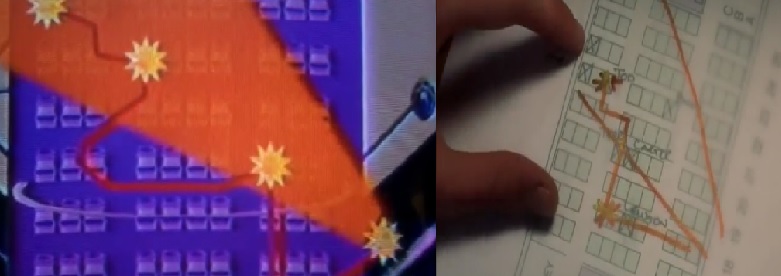
While Death’s plan may seem hidden, Death itself is, at its most apparent, no more than a gust of wind or dark shadow. This very intangibility and invisibility further associates Death with accidents: “As non-events, we pay little attention to near misses. […] By attempting to institutionalize an absence (no accidents), safety culture chases an ever-receding chimera, observable only when it ceases to exist.” (Silbey, 358) Instead, one could argue, we should focus on the adaptability and reliability of controls already in place.
This association of accidents and safety culture with invisibility, incompatibility and logical recession is parallel with the accident-prone antagonist of the Final Destination franchise, Death. Colin Odell and Michelle LaBlanc contrast Final Destination’s visual and philosophical presentation of death with other horror films, claiming that there is an intriguing and ironic genre-based logic in Death’s (in)visibility: “In terms of the serial killer or supernatural death film Final Destination is its reductio ad absurdum par excellence. […] In the high-concept world of Final Destination the cause of death is Death, and not even a scythe-wielding skeletal figure, just Death itself” (Odell and LeBlanc, 1990). Here, the lack of a clichéd and overtly melodramatic slasher villain makes the fatalities seem more direct, real and controllable. And yet, as the staged Rube Goldberg-style atrocities demonstrate, this villainous absence retains a sense of the visibly theatrical, impossible and uncontrollable. When unseen Death strikes in the form of grandly planned accidents, his invisibility is paradoxically revealed. Like the attempts to mandate the disappearance of mishaps in the workplace, the attempt by various characters to use Death’s design to prevent his havoc is similarly absurd. Death is conspicuous in his absence.

As a result, we would expect to see that attempting to control Death, like accidents and other non-events, may prove more problematic than helpful. To quote Silbey once more: “Each new safety process or procedure, each specification of the system, reinstantiates the system that was into something that is – something new, if not different. Thus, there remains an unwarranted confidence in the ability to marshal information, as well as its credibility, to control system behavior” (Silbey, 359-360). In other words, whenever new regulations are imposed onto a dangerous system, it automatically changes the very dynamics of the structure being accident-proofed. The initial disaster in Final Destination 5 is actually caused by attempts to improve the bridge, as the television reporter states: “A highway improvement project may have weakened the superstructure”. Hence, people may erroneously believe everything is controlled based on outdated information. Similarly, Alex and his friends believe they have successfully protected themselves from Death by the finale of the first film, yet that self-confidence in their understanding of Death’s design is their undoing. In their perspective, Death kills the survivors in the order they were meant to die in the original plane crash.
However, if somebody intervenes and saves the targeted individual, Death skips them and moves on to the next chronological victim. Having Death complete his rigid order by either killing or skipping the survivors, the three remaining characters celebrate their victory. However, much to everybody’s surprise, Death simply begins the list again and claims another unwary victim to a falling neon sign. To some, this twist ending with a focus on horror and shock means that “[s]pectacle wins out over contemplation in the reshot finale, which promises us that death hasn’t yet finished with the few survivors” (Marriott and Newman, 240). The fantastical and fatal end to Final Destination, by disrupting our perhaps pretentious “contemplation” and sense of closure, demonstrates the problem of creating or depending upon a singular and arrogant concept of safety. Death isn’t kept at bay by implementing one regime of control. Indeed, the list itself becomes a symbol of doom rather than security when red wine is spilt like blood over Alex’s name. In addition, the later films showcase how Death’s list can run backward, how red herrings may appear about a victim’s death or how people can even claim the lifespan of those they murder themselves. Also, every instalment of the franchise features alternate endings where different characters can live or die in different circumstances. Such constant changes exhibit the need for a dynamic, self-critical and proactive approach to safety measures.

Interestingly, Death never produces slow or naturally occurring executions in the Final Destination universe. Lightning strikes and terminal illnesses are not a part of its arsenal. This obsession with spectacular accidents reflects our current safety culture, where dangers that are “neither spectacular, sudden, nor disastrous, or that do not resonate with symbolic fears, can remain ignored and unattended, and as a consequence are not interpreted or responded to as safety hazards” (Silbey, 357). For instance, continuing environmental disasters that lack explosions or instant deaths, such as the decade-long Taylor Energy oil leaks, are often denied, ignored or slowly responded to. By focusing on gruesome and often shocking deaths, Final Destination showcases how safety culture prioritises events that resonate with the public’s tabloid sensationalism and morbid curiosity. Given the prevalence and coverage given to such disastrous occasions, some argue that similar accidents are “no longer able to shock [so] there is a loss of public trust and an increase in the likelihood of institutional failure” (Silbey, 358). People begin to assume that occasions like these are inevitable and therefore ignore signs or forego actions that would act as preventative measures. In contrast, as a horror movie franchise Final Destination depends upon its ability to horrify and shock audiences for revenue and success.
As one critic put it, the franchise’s “insistence upon the terrifying banal manner in which young life can be casually snuffed out […] does indeed function on some levels as a melodramatic return of the Real which temporarily punctures the fantasmatic and insular bubble of affluent middle-class youth” (Craig and Fradley, 93). Arguably, this is not just true for the teenage protagonists, but for the audience as well. By providing limited information, through linguistic or imagistic clues, the film makes the audience actively involved in predicting and imagining the deaths of the characters prematurely. This paranoid planning sucks them into the action. The subsequent accident often involves an unexpected twist or a scene of such sudden and gory proportions that it shocks the viewer and causes fright. Here, public disasters regain their visceral immediacy and the audience attempts to personally predict each filmic disaster. These terrifying events are redeployed not just everyday catastrophes but truly dangerous and shocking events that modern safety culture leaves us all unprepared for.

Ominous Accidents as Secular Miracles: “It would take a fucked up God to take down this plane. A really fucked up God.”
If there is an element of sudden shock and understanding in these prophetic disasters, then the discourse on accidents in Final Destination takes on an additional, almost revelatory, aspect. As cultural theorist Paul Virilio states: “The accident is an inverted miracle, a secular miracle, a revelation. When you invent the ship, you also invent the shipwreck; […] technology carries its own negativity, which is invented at the same time as technical progress” (Virilio, 1999; 89). For instance, car companies regularly crash their vehicles in test facilities in order to find overlooked flaws and correct unexpected problems, consequently creating a new car from the wreck of the previous model. These miniature and controlled disasters are essential to technical progress and personal safety. Likewise, the premonitions, clues and omens that help the characters to avoid vicious demises seem, despite their ominous nature, to be a positive force extending life in opposition to Death. As producer Craig Perry surmises, “Who’s to say that it’s necessarily a malevolent force? It does save people in one regard at first. I think that one of the things that we were looking to explore […] is the idea that there is potentially an opposing force to whatever Death may be” (Perry).
As a consequence, these revelations have a progressive, renewing and miraculous quality about them. In fact, in the original endings to both Final Destination and its sequel, the main characters get a second chance at living free from Death’s threatening presence by bringing ‘new life’ into the world, either through birth or resuscitation. The positivity of these scenes is enhanced by their overly bright colour schemes of whites and yellows. In fact, the unnatural wind that signalled Death’s manipulating presence is replaced by a welcomed breeze that represents Alex’s supernatural and protective presence. To be sure, the unplanned parenthood of Clear Rivers (Ali Larter) with Alex’s child in this alternative cut of Final Destination serves to cement this link between an “accidental” pregnancy and a miraculous affirmation of life. Consequently, we can see the premonitions of accidents as a potentially progressive and revelatory force. But, despite these sentimental possibilities, theology is often eschewed in the series, with its bleak tone demonstrating how “the deterministic God is replaced by a deterministic Death” (Henderson and Mitchell, 803). Consequently, religious terms like God or predestination are replaced by secular, anthropomorphic and vernacular terms such as Fate, Death or Death’s design. The premonitions or visions of disasters are positive, miraculous events of potential change and progress, but remain secular and technological.
The Accident as a Conspiratorial Attack: “This is crazy. You’re saying we should be on guard every morning when we leave the house?”
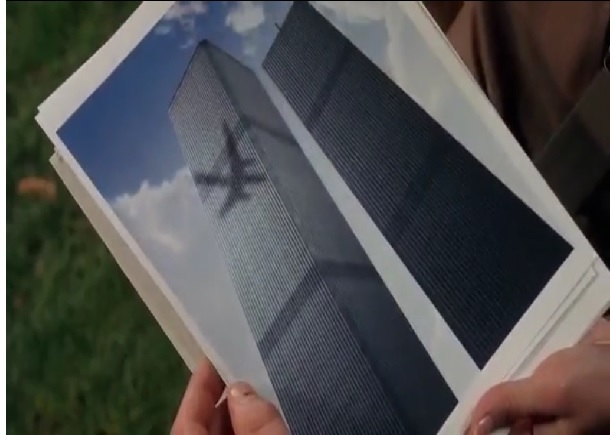
The question is then, if these accidents have a useful and beneficial side, why does the film series focus on horror, death and interpersonal conflict rather than anything more progressive? Interestingly, the authors and directors of the film were inspired “by the horror of and conspiracy theories surrounding the 1996 mid-air explosion of TWA Flight 800” (Mulholland, 385). Indeed, the invocation of major real-life catastrophes, whether Flight 800 in Final Destination or the September 11th attacks in the prophetic photographs shown in Final Destination 3, has caused some critics to call the series tasteless or exploitative. However, this cinematic representation of truthful tragedies as predestined accidents or systematic failures does serve a thematic purpose.
By fictionalising reality, Final Destination demonstrates the peculiar effects that contemporary media and communication technology has on both the original accident and society’s response to such huge errors: “the revolution of instantaneous transmissions brought about by telecommunications makes the accident global. […] The post-industrial accident, on the other hand, goes beyond a certain place, you may say that it does no longer “take place,” but becomes an environment” (Virilio, 1998). The ability for disasters to be anywhere and everywhere simultaneously due to television, the internet and mobile technologies has meant that any accident can spread instantly, triggering other catastrophes – whether economic or social – and creating a paranoid fear of all novel circumstances. The omnipresent threat of conspiratorial destruction is evident in how Final Destination 2 translates the plot of the first film by having its main character Kimberly Corman (A. J. Cook) watch a late-night conspiracy show about the original plane crash on television. Moreover, this fear of the accident, in combination with the association of systematic failure with violence, collateral damage and terrorism, has led to Virilian claims that in the “highly mediatized modernities we inhabit today […] ‘attack’ and ‘accident’ are increasingly indistinguishable. We are unsure whether we are experiencing (terrorist) attack or system or network failure when we regularly consume news of events in the media” (Redhead).
In other words, the accident becomes an apocalyptic and personal threat, and not a necessary aspect of technological progress and intellectual revelation. Thus, when Final Destination has Flight 180 explode in a similar manner to Flight 800 and shows survivors personally, secretly and manipulatively killed by Death itself, it is conveying how televised accidents create a pessimistic atmosphere of constant, conspiratorial and individual threat from disaster.
Conclusion: “I’ll win him over, even if it kills me.”
To sum up my overall argument, I shall briefly explore one distinct scene. In the most recent instalment, Final Destination 5, the social and economic politics of safety culture are embodied in a fatal conflict between supervisor Nathan Sears (Arlen Escarpeta) and unionised worker Roy Carson (Brent Stait). In the middle of a heated debate over pay, conditions and authority, Nathan nervously watches an approaching crane moving overhead. Suspecting the invisible hand of death above them, Nathan attempts to force Roy out of the way of the looming danger. But, when the hook rapidly descends, Nathan’s actions to protect Roy ironically result in the employee’s death. However, in accordance with Death’s design, Nathan actually claims Roy’s remaining lifespan by indirectly “killing” him. In effect, this scene literalises the aforementioned consequences of contemporary safety culture: the individualised health and safety routines promoted by business management results in more dangerous consequences for workers but more profitable costs for higher-ups. And yet, Roy is a minor character whose death was a plot twist not expected in Death’s original design. In fact, his death is revealed by a slow pan up from the feet, with the visuals changing from possible survival to gory finality, surprisingly revealing that Roy has been impaled on the hook by Nathan’s intervention rather than rescued from it. Arguably, then, the shock and gore of the twist death defamiliarizes the often abstract and legalistic nature of post-industrial accidents as “non-events” and instead challenges our reliance on bureaucratic, personally-responsible and commercial modes of safety regulation that are potentially dangerous and exploitative.
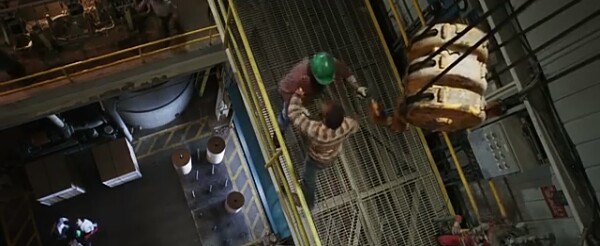
References
Ali. ‘Review: Final Destination 3.’ The Shiznit. March 02, 2006. Web. Accessed August 31, 2015.
Blake, Marc and Sara Bailey. Writing the Horror Movie. London; Bloomsbury Publishing, 2013. Print.
Borden, Iain. Drive: Journeys through Film, Cities and Landscapes. London; Reaktion Books, 2012. Print.
Craig, Pamela and Martin Fradley. ‘Teenage Traumata: Youth, Affective Politics and the Contemporary American Horror Film.’ American Horror Film: The Genre at the Turn of the Millennium. Ed. Steffen Hantke. Mississippi; University Press of Mississippi, 2010. 76-102. Print.
Henderson, Frances and Jolyon Mitchell. ‘Religion and Film.’ The Routledge Companion to Philosophy of Religion. Eds. Chad V. Meister and Paul Copan. Abingdon; Routledge, 2007. 796-808. Print.
Marriott, James and Kim Newman. Horror: The Definitive Guide to the Cinema of Fear. London; Andre Deutsch Limited, 2006.
Mulholland, Garry. Stranded at the Drive-In: The 100 Best Teen Movies. London; Hachette UK, 2011. Print.
Odell, Colin and Michelle LeBlanc. Horror Films. London; Kamera Books, 2010. Print.
Perry, Craig. ‘Final Destination 5: The Set Visit.’ Shock Till You Drop. Interview by Edward Douglas. July 12, 2011. Shock Till You Drop. Web. Accessed August 30, 2015.
Redhead, Steve. ‘The Art of the Accident: Paul Virilio and Accelerated Modernity.’ Fast Capitalism 2.1 (2006). Fast Capitalism. Web. Accessed August 30, 2015.
Silbey, Susan S. ‘Taming Prometheus: Talk About Safety and Culture.’ Annual Review of Sociology 35 (2009): 341–369. JSTOR. Web. Accessed January 17, 2015.
Virilio, Paul. Politics of the Very Worst. New York: Semiotext(e), 1999. Print.
Virilio, Paul. ‘Surfing the Accident.’ The Art of the Accident. Interview by Andreas Ruby. 1998. V2. Web. Accessed August 31, 2015.
What do you think? Leave a comment.











Now… I almost want a new Final Destination film. Almost.
I’m a huge fan of the FD franchise. FD five was one of my favs. I will say though, one thing that bugged me at the end was when they (Sam & Molly) were on the plane (Flight 180), they showed Alex getting taken off the plane, right after that the plane took off. Now in the original FD the plane blew up on take off, close enough to blow the windows out at the airport. In this one they were well in the air far enough that a wheel came off & crushed a man.
Great thesis. When will we see FD 6?
Can there be a Final Destination film where the makers of Final Destination films are pursued by Death? Not because they’ve accidentally exceeded their time on earth, but because The Behooded One can’t stand their tiresome riffing on the same old gubbins every bleedin’ year.
The artwork for these films has gradually moved from showing the characters to grim skulls.
I watched the first Saw the other night on Film4 thinking there must have been some hint of quality to justify the endless torrent of sequels. How wrong I was.
I think Alfred Hitchcock would be disappointed at the hamfisted manner some films approach horror.
Really great article.
These movies remind me a little of those 1970’s public information TV skits about the perils of dodgy DIY. You know, the guy being reckless up a ladder, or the drill plugged into the mains using bare wires and match sticks, etc. I miss those info-mercials, and worry that a whole generation of kids are growing up in ignorance without the benefits we had as kids.
So every time i lecture the girls on the perils of over doing it on the sun beds i remind them of a certain scene in a Final Destination movie. Unfortunately the effect of that scene has warn off over time and the girls always lecture me back on the safety of modern sun beds, because kids, they always know better. I therefore wish to challenge the makers of this particular franchise to just try that scene one more time with all the safety features on, and this time make sure there is no escape!
I can see whole new opportunities for this movie franchise opening up, besides parents needing to scare their kids with info-mercials on steroids, there is of course a massive opportunity here for Injury Lawyers 4U or even the CoOp. I could go on.
I love the series because it is just so over the top.
These movies are ridiculous but fun. It has gotten to the point where the writers are trying to just find the most unbelieveable and over-the-top death sequences (where the knife or whatever pretty much grows legs and runs at the victim) but at the end of the day this is a teen slasher so what more can you expect? It’s pretty much A Nightmare on Elm Street but without Freddy.
The Final Destination series isn’t likely to stop here (the last movie – The Final Destination – was supposed to be the last movie, but isn’t that what they all say?) so we might as well get used to the fact they’ll be another 10 or more by-the-numbers slashers after this and just enjoy them.
Films 1,2 and 3 were half decent and at least played along with the idea that you couldn’t cheat fate in a semi-serious way. The Final Destination really just took all that as a given and went straight to the catalogue of death scenes.
The Final Destination movies are a bit of a guilty pleasure for me, although I wish they’d vary the cast a little. I’m bored of attractive young teens being stalked by the grim reaper and would like to see the next one set in a retirement home. It would also be a little more realistic that way.
There’s a lot of cheesy fun to be had in franchises with sequels three or higher.
I enjoyed 1-3, haven’t seen 4.
As with any series they get more and more desperate the longer they go on, especially with horror, and don’t seem to know when to call it a day.
I have to say that the original Final Destination film was excellent. Hitchcock would have been proud. Excellent writing and cast. Chilling. None of the deaths were cheesy and some good acting from a young cast. A horror film maybe, but certainly not anything to do with Freddy et al.
Final Destination 2 came along I seem to recall and upped some of the gore level. The kid getting crushed like a tomato underneath the heavy plate glass dropped from the crane for example and the guy getting cut into sections by the barb wire. Well all that was maybe forgiveable because the catalyst for death / motorway scene for the pile up was so excellent written you get massive chills. I have to say this was pretty good too.
3 was the rollcoaster one I think. Pretty naff. Still not a slasher film, but it was in this film more than any other they would give you the rope a dope… i.e. you think they’re going to buy it from one way and then you change your mind again and then a surprise comes up and takes them another way.
4 was a bit pants. Some fairly sick stuff by this time and the disaster part was a stock car accident I seem to recall that was pretty naff in comparison to the first 2 films sequences.
The forth film was amazing in 3D.
I actually quite enjoyed the first FD and thought it was rather an original idea. Shame they milked it to death.
I have never heard of Final destination but enjoyed reading this analysis.
I remember the stuck up blonde babe getting fried to death on the sun-tanning bed. Ah…And now bacon for breakfast!
Like the Saw franchise, the Final Destination movies hit on a successful formula and stuck to it slavishly. They’re like a fast food chain. You know they’re not very good for you, but they’re kind of tasty and at least you know what you’re going to get.
I love the Final Destination films: they’re kind of like Casualty with all the boring bits cut out.
I’ll be honest, this film series has often made me want to cry but not for the reasons the makers would think, or want (namely script, acting and execution for starters …)
The first one was pretty poor, so the others were’t really worth watching.
All of the movies in the series tell the same basic story with different characters and minor nuances.
Acute remark.
This series still continues to be perversely entertaining and surprisingly relevant as this article demonstrates.
The first and second Final Destinations are very well done, easily the best in the series by miles.
All 5 movies were intriguing and very interesting. It kept me guessing throughout each movie who would die next but I was never right on who would die.
A good essay. Having seen most of the movies in this series, this essay does a good job presenting Death.
This is a very insightful article. I would have never thought the movies could show why safety regulations may not be safe at all. The analogy is excellent, and raises the question on whether these characters should have tried fleeing in the first place and whether it would have been at all possible.
Love these films, love the focus of the article too 🙂
I’ve always seen the FD series as a shock value franchise with it’s main appeal being the (dare I say creative?) use of common commercial items being used as deadly murder tools in the most elaborate and goriest way possible (and the ‘but wait, there’s more!’ moments especially seen in the second film). However, I do agree that the scariest part from those movies are the invisible threats that loom over the protagonists that are uncontrollable and cause anxiety for the main characters. And like you claimed, this is seen not only from death, but from the authority figures that do not believe (or sometimes even refuse) to help the protagonist. I like this new perspective on a film franchise where people are blown up by backyard grills and there disembodied hands land on picnic tables.
Well-thought out analysis. I am interested in the notion that the horror movie, at least a certain pinnacle of even shock-and-awe horror or torture porn, represent latent fears within new societal paradigms. The industrial and safety culture tensions that have emerged in the past 20-30 years and their playing out in this film are a great example.
Loved all the final Destination films ! Sum were funny sum were made me sick lol but great over all